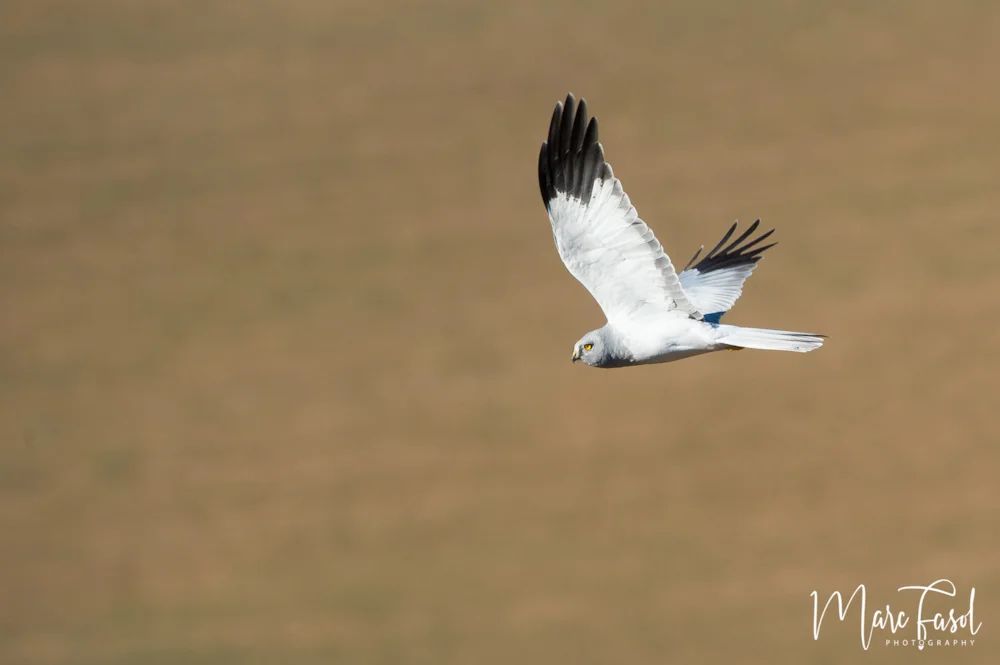Hen Harriers to be bred in captivity and released in Wiltshire
Hen Harriers are to be bred in captivity in England for the first time and then released into the wild on Salisbury Plain.
Twelve birds – six males and six females – have been brought from France and Spain to establish breeding pairs, in a Natural England project in collaboration with the International Centre for Birds of Prey, which aims to release at least 100 birds over the next five or more years.
Young Hen Harriers were rescued from nests in crop fields in France by volunteers, who ensure that if a harrier nests in a wheat field, the chicks are saved before the combines move in. Two additional birds are being brought in from Spain. The birds will begin to breed next spring, although the new pairs may not produce enough chicks for release into the wild until 2024.

The project aims to release at least 100 Hen Harriers on Salisbury Plain over the next five or more years (Marc Fasol).
Hen Harrier's only English breeding populations are currently on northern moorlands, where the species has been subject to widespread persecution in recent decades. Hen Harrier hasn't bred in southern England for decades but it nests on the ground in lowland grassland and arable fields on the continent, and conservationists believe it can thrive again on English farmland without persecution – if birds are returned there.
The University of Exeter researched suitable sites for reintroduction and concluded it made more sense to reintroduce them on to areas of grassland and farmland, which are commonplace in southern England, rather than isolated moorlands such as Exmoor and Dartmoor. While much of Salisbury Plain is Ministry of Defence land, where the birds should therefore be free from persecution, Natural England has spent four years talking to farmers and game shoots in surrounding Wiltshire.
Releasing captive-bred birds will aim to create a southern breeding population of at least 100 individuals, after which it is hoped Hen Harriers will spread across the landscape as Red Kite populations have since their successful reintroduction in 1990.
Simon Lee, a senior adviser at Natural England, the government's conservation watchdog, told the Guardian: "The southern reintroduction project is an excellent example of international collaboration to drive species recovery. Working together, we hope to create a sustainable population, which supports the long-term revival of this much-loved species.
"Hen Harriers are magnificent birds of prey, which sadly face many challenges including persecution and habitat loss. We are committed to driving down persecution to ensure permanent recovery of the species.
"We were nervous when we started to talk to people about it because of the history of persecution and the dynamic between conservationists and the shooting industry but we were very, very pleasantly surprised by the reaction.
"The overwhelming response was actively supportive. The one thing harriers have no impact on whatsoever is typical Common Pheasant and Red-legged Partridge shoots. Harriers are way too small to take a pheasant."

